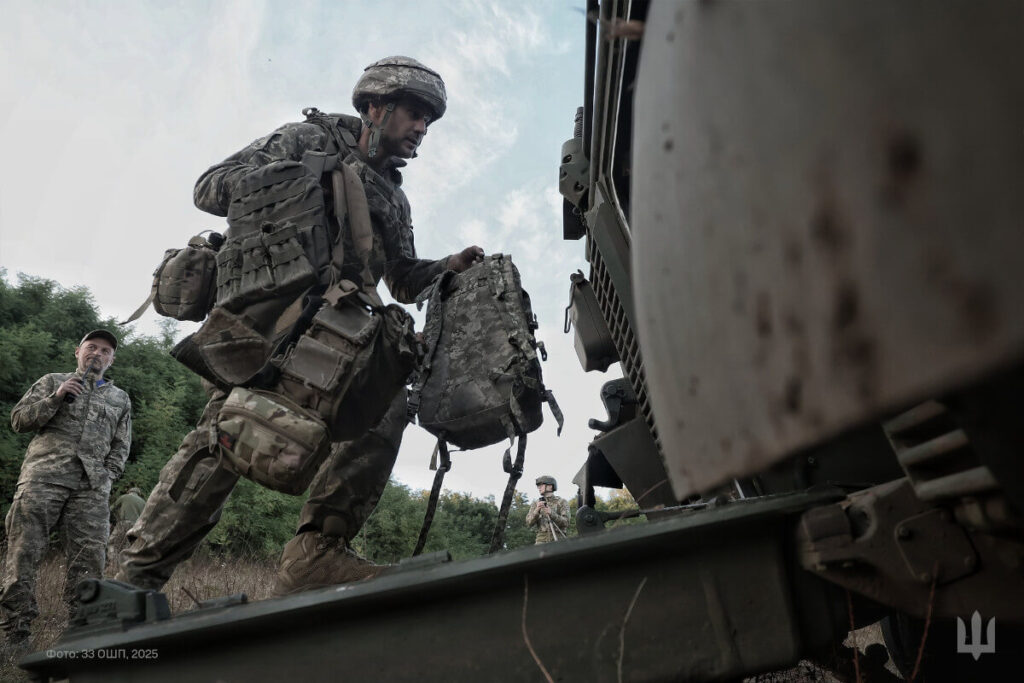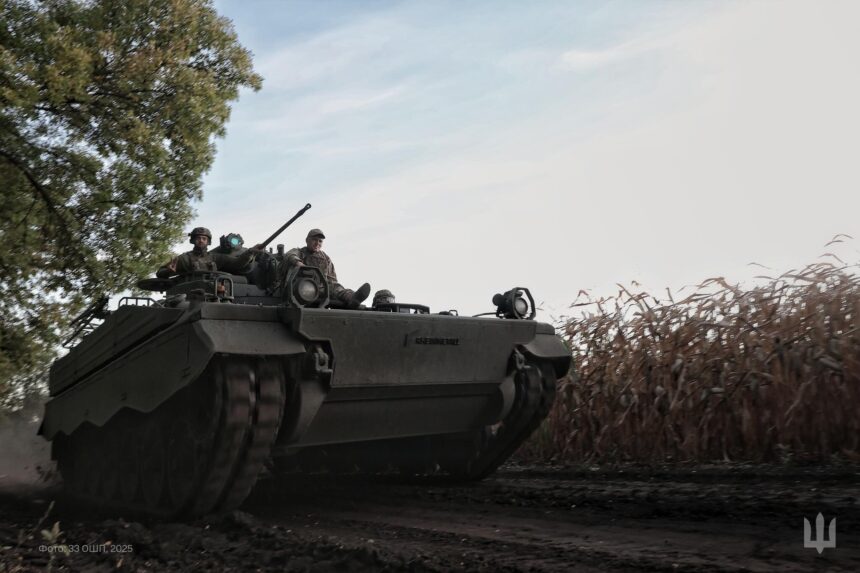Shortly after taking office this year, the German government decided to withhold almost all information about military support for Ukraine in future. Since then, journalists have found it very difficult to inform their readers about Germany’s support for Ukraine with military equipment.
One of the now most reliable sources for this type of information is none other than the Ukrainian military, which continues to regularly publish information that the German government is trying to keep under wraps.
The latest case suggests that the 33rd Assault Regiment must have recently received a new shipment of Marder 1A3 IFVs, which, as far as can be proven, have so far been supplied exclusively by Germany – in some cases with support from Denmark.
The regiment, which also relies on the M2 Bradley as its IFV in addition to the Marder, announced this on its Facebook page on Saturday.
A post that can be found there contains a few pictures of a German-made infantry fighting vehicle together with Ukrainian soldiers and is captioned with the text that the “gun calibration of a new Marder in the 33rd Separate Assault Regiment has been successfully completed” and that “the vehicle is being prepared for combat work”.

While it is of course possible that the vehicle, like other vehicles, was recently transferred to the 33rd Assault Regiment by another unit – possibly after extensive maintenance or repairs – I consider it at least more likely that Germany has delivered new infantry fighting vehicles to Ukraine, which are now being put into service.
Officially, Germany has delivered 140 Marder 1A3 IFVs to Ukraine by April 2025, with Denmark providing partial financial support for the deliveries.
The plan was to deliver another 20 to 25 vehicles to the Ukrainian army by the end of the first half of the year. This would mean that all publicly known commitments would have been honoured. However, the German government has not yet confirmed the delivery, which was probably made months ago.
Provided that the vehicles were delivered months ago, as publicly promised, and that the vehicles just put into service are not in fact vehicles transferred from another unit, the German government is likely to have made new commitments in the past few months.
This may be a commitment that was made during Ukrainian President Volodymyr Zelenskyy’s visit to Germany at the end of May 2025. As part of a €5 billion aid package, the German government promised additional “land weapon systems” at the time, without going into details.


This is, of course, only speculation, but nevertheless very likely. Without new commitments, all deliveries of main battle tanks as well as infantry fighting vehicles from Germany would come to an end this year for the foreseeable future.
At least in the case of infantry fighting vehicles, it was recently announced that the German government has still not given any funding commitment for Rheinmetall’s far more modern Lynx IFV. This was revealed by Rheinmetall CEO Armin Papperger in an interview with loyal.
The company is currently building just five vehicles in Germany for Ukraine, and these are probably still part of the total of ten test vehicles that have been promised.
On the other hand, there is a three-digit number of Marder 1 IFVs still in service with the German Bundeswehr, which are now gradually being decommissioned. These could be overhauled by Rheinmetall and then delivered to Ukraine.
Whether and when further deliveries will follow therefore depends less on industrial capabilities than on political decisions being made in Berlin. However, the case of the 33rd Assault Regiment clearly shows that these decisions may already have been made and that deliveries may well have been underway in secret for some time.
If you liked this post, consider following me on X, Bluesky, or Telegram. If you like, you can also leave me a tip on Ko-fi.


